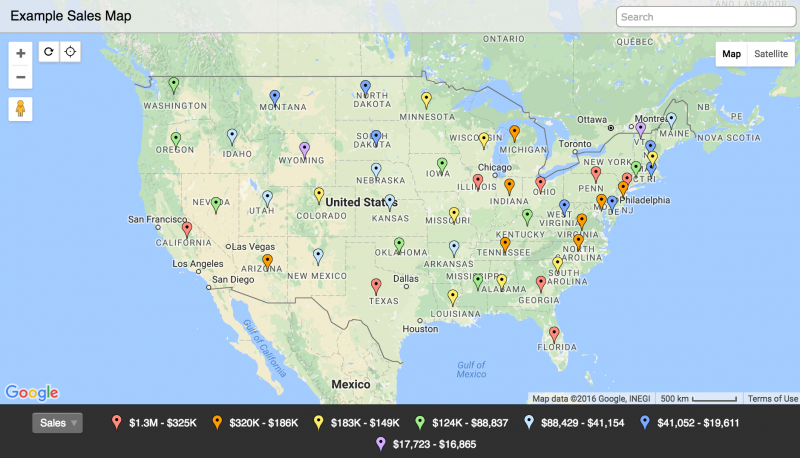Map the Locations of your Potential Customers
Objective: Identify the physical locations of your target market so that you can align localized campaigns more effectively.
How: This tactic first came about in a campaign that I ran a few years ago where we needed to figure the high concentration areas of where customers were located in order to align a bunch of offline experiential ads in the most effective positions.
On top of this, this data can be gold for your sales teams, especially if it's in a format that's easy to consume.
For B2B businesses, this can be a really useful technique to implement, even if you don't actually have the data in the first place.
To explain this, I'll go through a basic process that I take. Just so that this makes sense, let's assume that your company is a building materials manufacturer that's looking to reach more individual building contractors within the UK.
- First you need to identify a data source. If you don't have existing data within a CRM or otherwise, move to step 2; otherwise skip straight to step 4.
- Identify online directories, such as freeindex.co.uk that has individual profile pages that local business contractors can advertise their business on.
- Crawl the directory using a tool like Screaming Frog SEO Spider to get a list of URLs of the profile pages. You should be able to filter out building contractors via the URL structure. Once you have these URLs, use data scraping to extract the business name, address, phone number and website. If you've never done any data scraping before check out this tutorial that I put together.
- You'll now have a spreadsheet with all the data on your prospects. Clean up any formatting issues and go to BatchGeo.com.
- Upload the spreadsheet and let BatchGeo do the hard work of mapping the data points against markers on the map.
- Pass on the final visualization to your sales team.

